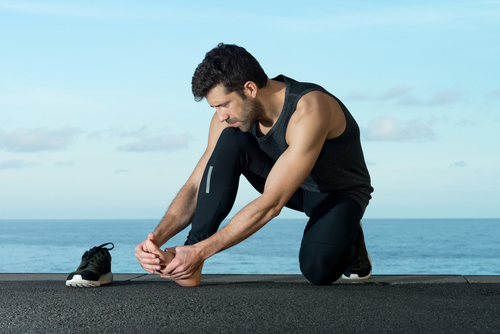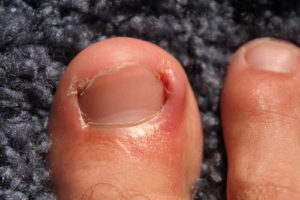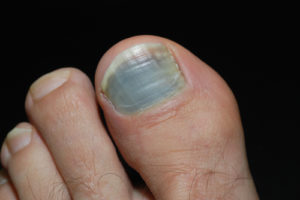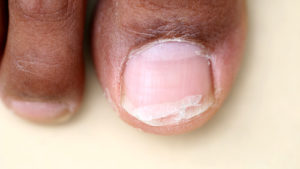
Ingrown Toenails and Other Nail Related Injuries
As an avid runner, I know all too well that toenail injuries are likely to occur. I have experienced some of this myself, and after a long race, I usually take off my sneakers to assess the damage. Whether it’s ingrown toenails, hematomas, or other nail deformities, these common injuries are a part of many runners’ lives. As part of the Discussion Series on Running Injuries, here we discuss a few very common toenail injuries.
Ingrown Toenails
One of the most common injuries to the toenail is ingrown toenails. In athletes, they’re generally caused by pressure or excessive force on the nail. Contributing factors include tight shoes, explosive movements and long distance running, which causes repetitive trauma to the toe. Even for non-athletes, the way the nail naturally grows may make it susceptible to becoming ingrown. Improperly cutting the nail can also be a cause.
Home treatment options for ingrown toenails include warm soaks with Epsom salt, antibiotic ointment, and anti-inflammatories. However, these treatments don’t always fix the issue. Sometimes, professional treatment is necessary to remove a portion of the nail that is ingrowing. If you want to prevent ingrown toenails, be sure to cut the nails with precision. This means generally cutting them straight across and not cutting them too short. Buying properly fitting shoes also helps to prevent ingrown toenails.
Subungual Hematoma, aka Runner’s Toe
Besides ingrown toenails, another very common injury is a subungual hematoma, aka Runner’s Toe. It happens with a repetitive trauma, causing downward force onto the toe. This in turn causes the nail plate to separate from the nail bed. The blood then pools beneath the nail plate where it collects, causing throbbing pain from the pressure. The nail may have a black, red, maroon or even greenish discoloration to it.
When patients come into my office with this problem, I usually tell them the treatment options based on the severity and how much blood pooling and nail separation have occurred. If it is minor and non-painful, sometimes they opt to leave it alone and monitor the nail as it grows out. Other options include trephination, which is drilling a small hole or holes to drain the blood. This also releases the pressure, reducing pain and swelling. At times, the nail may need to be removed.
Toenail Deformities
Repeated trauma will sometimes result in deformities in the nails and can often resemble nail fungus. The nails usually appear thickened with ridges and are discolored. This can cause separation of the nail from the nail bed. These ridges and deformities can also allow fungus to get into the nail easier, causing a secondary fungal infection. Patients often believe their nail deformity is primarily the result of fungus. However, oftentimes trauma is the primary cause. A nail culture is one way to determine if it’s fungus or in fact trauma related.
There are a few ways to prevent nail deformities from occurring. One sure fire way is running in sneakers that fit properly. This ensures they aren’t too tight or too loose. The toes will then be prevented from hitting against the top of the shoe. One commonly overlooked method of nail care is using a moisturizer directly on the nails. Moisturizing nails is a great way to keep them strong. Urea lotion, tea tree oil, and coconut oil are great for nails as well as moisturizing skin. Proper nutrition also plays a big part in keeping the nails strong. Finally, maintaining a square shaped nail will help keep it from becoming susceptible to cracks and splits.
Final Thoughts
Nail trauma is many times an inevitable occurrence for runners. To help prevent these injuries, it is recommended to buy well-fitting running shoes with plenty of room in the toe box. Visiting a specialized running store, such as Runner’s High here in Freehold, is generally preferred over big-box shoe stores. There, specialists will help you find shoes that are perfect for your specific foot type. Proper nail care and nutrition are equally as important to help prevent running related nail injuries.
If you have additional questions or are seeking advice, please comment in the box below or feel free to contact us here.